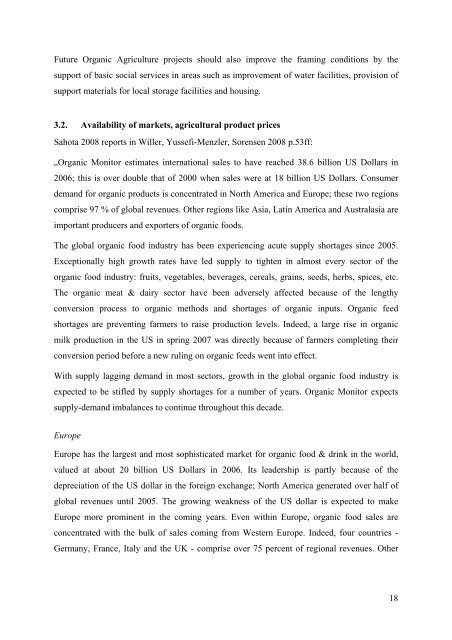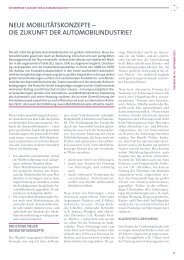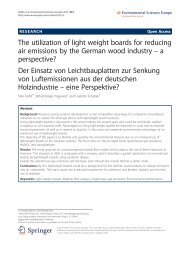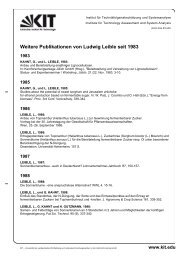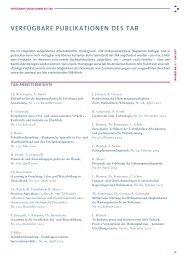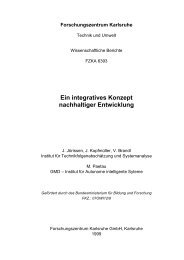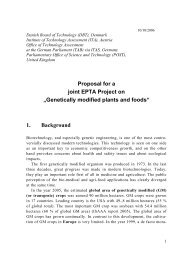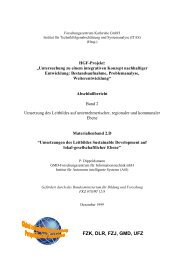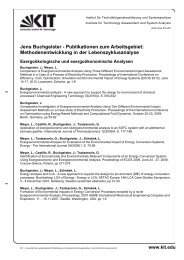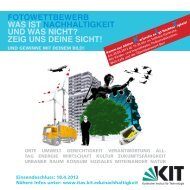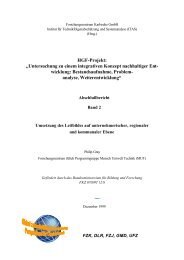Annex 4: Case study âOrganic Farmingâ - ITAS
Annex 4: Case study âOrganic Farmingâ - ITAS
Annex 4: Case study âOrganic Farmingâ - ITAS
Create successful ePaper yourself
Turn your PDF publications into a flip-book with our unique Google optimized e-Paper software.
Future Organic Agriculture projects should also improve the framing conditions by the<br />
support of basic social services in areas such as improvement of water facilities, provision of<br />
support materials for local storage facilities and housing.<br />
3.2. Availability of markets, agricultural product prices<br />
Sahota 2008 reports in Willer, Yussefi-Menzler, Sorensen 2008 p.53ff:<br />
„Organic Monitor estimates international sales to have reached 38.6 billion US Dollars in<br />
2006; this is over double that of 2000 when sales were at 18 billion US Dollars. Consumer<br />
demand for organic products is concentrated in North America and Europe; these two regions<br />
comprise 97 % of global revenues. Other regions like Asia, Latin America and Australasia are<br />
important producers and exporters of organic foods.<br />
The global organic food industry has been experiencing acute supply shortages since 2005.<br />
Exceptionally high growth rates have led supply to tighten in almost every sector of the<br />
organic food industry: fruits, vegetables, beverages, cereals, grains, seeds, herbs, spices, etc.<br />
The organic meat & dairy sector have been adversely affected because of the lengthy<br />
conversion process to organic methods and shortages of organic inputs. Organic feed<br />
shortages are preventing farmers to raise production levels. Indeed, a large rise in organic<br />
milk production in the US in spring 2007 was directly because of farmers completing their<br />
conversion period before a new ruling on organic feeds went into effect.<br />
With supply lagging demand in most sectors, growth in the global organic food industry is<br />
expected to be stifled by supply shortages for a number of years. Organic Monitor expects<br />
supply-demand imbalances to continue throughout this decade.<br />
Europe<br />
Europe has the largest and most sophisticated market for organic food & drink in the world,<br />
valued at about 20 billion US Dollars in 2006. Its leadership is partly because of the<br />
depreciation of the US dollar in the foreign exchange; North America generated over half of<br />
global revenues until 2005. The growing weakness of the US dollar is expected to make<br />
Europe more prominent in the coming years. Even within Europe, organic food sales are<br />
concentrated with the bulk of sales coming from Western Europe. Indeed, four countries -<br />
Germany, France, Italy and the UK - comprise over 75 percent of regional revenues. Other<br />
18


